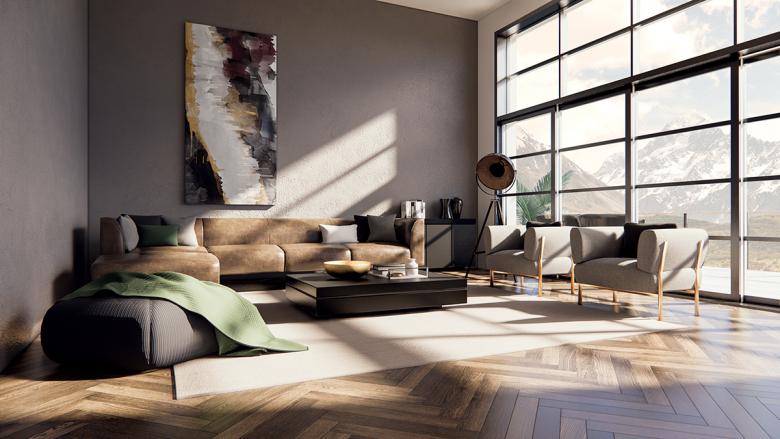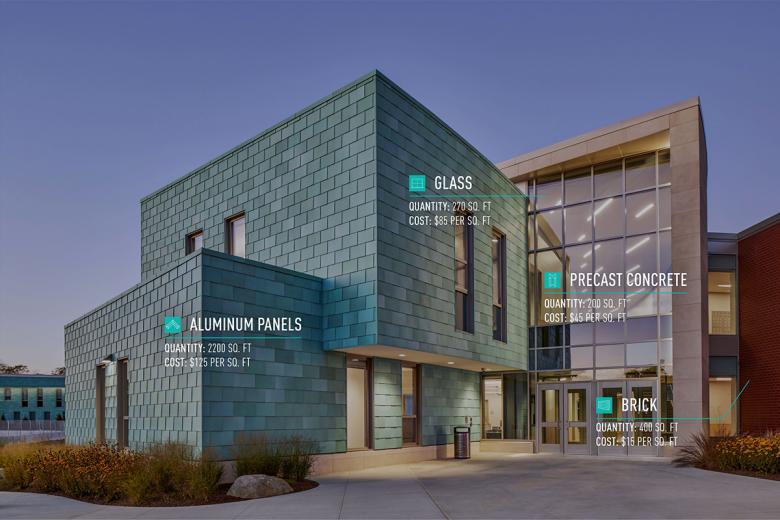The ‘BIMness’ of Vectorworks 2021
The semi-annual Vectorworks Design Summit allows Vectorworks users the opportunity to connect with other users, interact with the company’s software developers, and hear about new developments for future updates. This year’s Design Summit was canceled due to the coronavirus pandemic, so presentations of new developments moved online. Here we highlight a few upcoming features that were mentioned in those presentations and which we learned more about through a conversation with Vectorworks CEO Dr. Biplab Sarkar.
The next version of Vectorworks’ suite of software for the AEC, landscape, and entertainment design industries will arrive in September, with the release of Vectorworks 2021. Like previous releases, new features in Vectorworks 2021 will lean heavily toward the user experience, with a full 55 tasks in that release focused on usability. That number was one of many bits of information I learned from Sarkar when we spoke via Zoom in May, a few weeks after the 2020 Vectorworks Design Summit was originally scheduled to take place in San Diego, California. Our conversation focused on some of the features — coming in that release or in future updates — most relevant to architects, from user interactions and performance, to renderings and the essential “BIMness” of Vectorworks software.
Every day around one billion user interactions are logged by Vectorworks, specifically users who have opted into sharing their usage data. The anonymized interactions fall into two general types: usage logs and crash logs. The latter has a clear purpose, letting the Vectorworks developers see what users were doing before a crash so they can, if necessary, provide a fix. “Usage data,” Sarkar told me, “supports our drive for quality” and is therefore especially helpful in determining new features. The usage logs, for instance, indicate what commands are used most; this information gives Vectorworks a better handle on where they should invest their efforts, such as on improvements to a heavily used command. The usage logs also indicate what operating systems are being used and help determine if Vectorworks should continue supporting an old OS — be it on Mac or Windows platforms — or stop, if most users have updated to newer systems.
Some of the most exciting developments with the usage logs involve studying the workflow patterns of users. To streamline how they interact with the programs — in particular how much cursor movement is necessary to select and use tools — the September release will include a Smart Options Display and a new Quick Search function. Both are context-sensitive and invoked from the cursor. "If you’re using a particular tool," Sarkar told me, "the Smart Options Display includes all the modes for the tool right at the mouse cursor location.” Similarly, the Search being brought up at the cursor saves any movement away from the drawing window. These tools are particularly helpful for people working simultaneously on multiple monitors.
Using machine-learning algorithms to study workflow patterns, future releases will see, for example, the Smart Options Display suggesting tools based on the users habits, not just the tool selected. While it’s too early to integrate such machine-learning in Vectorworks, Sarkar explained, “we made some prototypes and it’s working well.”
Vectorworks 2020, released last year, saw the initial support for multi-core processing, in which “the software starts streaming the geometry immediately after loading the model; it’s not waiting for the process to complete.” Sarkar continued, “If it has some data, it starts showing it and in the background it’s using multiple cores to get the rest of the data.” Released in March, the Service Pack 3 for Vectorworks 2020 included significant improvements to the suite of Vectorworks software, some via the connection of such outside technologies as Enscape, a real-time rendering engine.
While the core processing of Vectorworks is handled by the Vectorworks Graphic Module (VGM), features like Enscape use Vectorworks Graphic Sharing (VGS). VGS, in Sarkar’s words, “takes all of the geometries and attributes and streams it to other applications,” such as Enscape or Lumion. Unfortunately, these two technologies only work on Windows machines. Since Vectorworks users are roughly split evenly between Mac and Windows, something integrated into the software — running on VGM, not VGS — is needed.
That something is Maxon Redshift, what Sarkar calls the “next quantum leap for Vectorworks’ rendering capabilities.” Maxon, a Nemetschek company, acquired Redshift Rendering Technologies in 2019, and Vectorworks is now working with Maxon on integrating Redshift as an internal rendering mode for its software. Although it won’t be ready for the 2021 release, Redshift should come soon after and be “a super-fast rendering mode inside Vectorworks.”
“Materials,” as Sarkar told me, “is one of the essential resources for the ‘BIMness’ of our product, because everything is made up of real items.” Materials is a new resource that enables objects in a 3D model to have graphical attributes, construction properties, product data, and physical characteristics in one place, and therefore can be used for accurate material take-offs, among other things. Information that is specific to a certain material, such as its modulus of elasticity or reflectivity, would be encompassed within the Materials resource; any objects that a material is applied to would then take on those attributes.
Material data was previously stored using class attributes or custom records, but Sarkar told me that became “cumbersome and confusing,” plus it was non-centralized. Materials will be the one place for material information, a central place that stores all of the physical characteristics of materials. When applied to objects, that information can be used to accurately calculate how much concrete or how many bricks are in a design, but also for structural analysis, daylight analysis, and other things.
Another forthcoming feature melds 3D modeling and BIM. Custom Wall Components will enable a finish component to wrap around a column, wall, window, or another design feature with a custom shape. The capability will start with the wall, hence its name, and then be extended to other objects in future updates. Users will be able to wrap finish components in their BIM models and use the tool to define the correct joints or other conditions needed in that location. It fuses the automatic and the custom, or as Sarkar put it: “Automatic ways of doing things solve about 80% of the problems, but the rest, the 20%, needs some custom tools. That is what this particular feature is going to provide.”
To learn more about Vectorworks and their BIM offerings, visit their website.
World-Architects is an Exclusive Media Partner for the fifth Vectorworks Design Summit, which was scheduled to take place April 22-24, 2020, in San Diego, California, but was canceled due to the coronavirus (COVID-19) pandemic.


